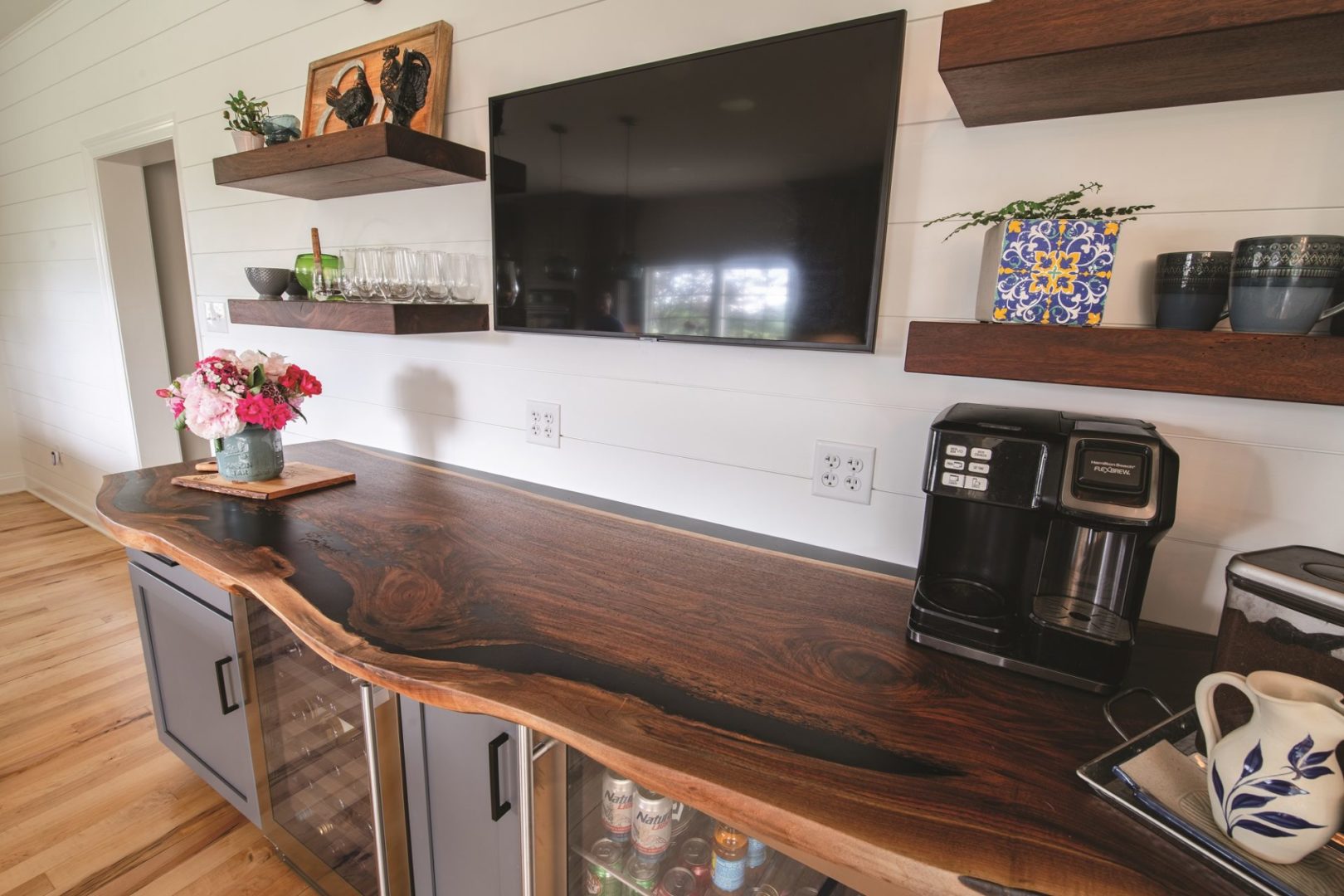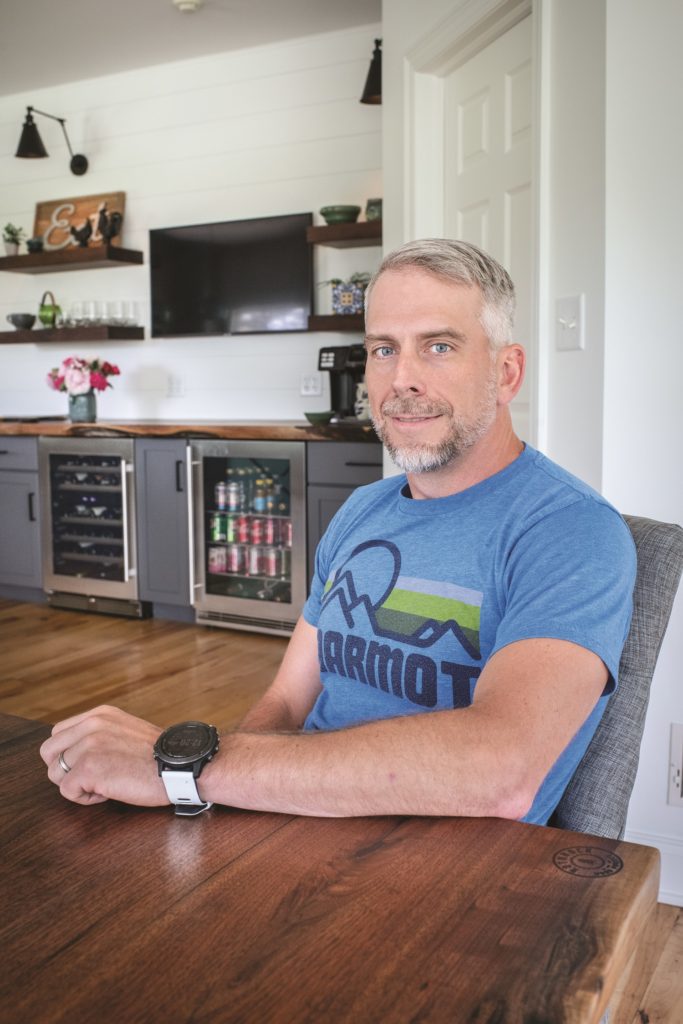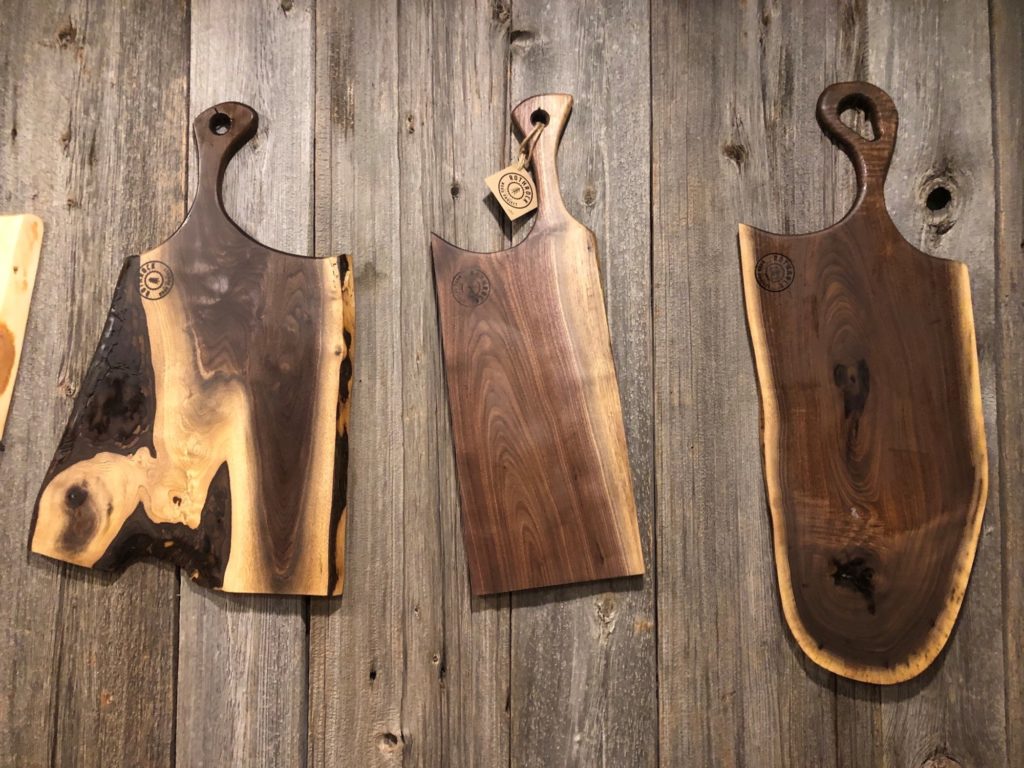
Scott Hildebrand says he finds it gratifying to see something in log form turned into a piece that people will enjoy. (Photo by Darren Andrew Weimert)

Scott Hildebrand says he finds it gratifying to see something in log form turned into a piece that people will enjoy. (Photo by Darren Andrew Weimert)
By Kristen Gimelli
Scott Hildebrand makes furniture that has a story behind it.
Hildebrand’s Rothrock Wood Project salvages downed trees, turning them into bar tops, coffee tables, end tables, dining tables, charcuterie boards, and grazing tables.
“It’s not just a piece of furniture; it’s a conversation piece,” he says.

Hildebrand got the idea for his business while hiking through Rothrock State Forest. He passed countless trees taken down by Mother Nature and thought about all the people who have passed by and the memories that were made while walking a dog, riding, or running with friends.
The Rothrock Wood Project aims to unlock those stories and present them in hand-crafted furnishings, finding purpose and permanence in the lives of the people who cherish what they stood for.
One of Hildebrand’s most popular items, the charcuterie board, came about by accident. While making one of his tables, he used the scraps to create something new.

“I’ve always liked curves, artsy things, and things that weren’t squared off,” Hildebrand says. “I always thought these charcuterie boards were a pretty cool idea, so I made a few of them, posted them to Facebook or Instagram and they sold instantly, and then we had orders for like 30.”
Each piece of furniture is custom-made and stamped on both sides. Every grain mark, curve, imperfection, and notch are one-of-a-kind. The stamps became a great way for Hildebrand to advertise his business.
“When the charcuterie boards are served at parties, everybody sees that stamp and they really are conversation pieces. … Like, ‘What is that? Where did you get that,’” Hildebrand says.
Every piece that he makes has the GPS coordinates on it from where the tree grew. Hildebrand realized that it didn’t matter if the tree came from Rothrock State Forest. People asked him to use trees that fell down in their neighborhood.
“The fact that people know where it’s from means something to them,” Hildebrand says. “It became more about people connecting with something unique.”
COVID-19 was a blessing in disguise for his business, Hildebrand says.
The Rothrock Wood Project started out as a hobby. When his full-time job came to a halt because of the pandemic, Hildebrand was able to focus solely on his business.
“It also showed me how much people were ready to reconnect with stuff that was real, local, and support local people,” Hildebrand says. “It was a huge opportunity for me to go after something that I really enjoyed without feeling too bad about my other job.”
His advice for people who want to start a business is to go after what you love doing. If you have passion for something, generally people will share in that passion, he says.
“I thought the whole GPS coordinates was just a thing that was interesting to me. … It’s interesting to everybody,” Hildebrand says.
His most recent project is a kitchen renovation. He is building a bar top, floating shelves, and a dining table.
The best way to check out Hildebrand’s pieces is online. He recommends going to The Rothrock Wood Project’s website (rothrockwoodproject.com), Facebook, or Instagram page. His pieces will be on Esty once he is able to move into a new facility (at the old Sutton Engineering property on South Potter Street in Bellefonte) and ramp up production.
Hildebrand’s vision for his business in the future is supplying to people who want something very personal. He also wants to sell furniture-ready slabs and table kits to customers as a DIY project.
“I want to have videos and be able to teach people how to finish their own dining tables,” he says. “I want to be able to hold classes at the new building so people can come and make their own charcuterie board.”
Hildebrand is proud of his work and loves giving people furniture that has meaning behind it. It’s gratifying for him to see something in log form be turned into a piece that someone is going to enjoy.
“I hate calling these things furniture because furniture is so general,” he says, adding, “I can’t say until I started doing this that I ever had a piece of furniture mean something to me, and that’s my goal.”
Receive all the latest news and events right to your inbox.
403 S. Allen Street
State College, PA 16801
Phone: 814-238-5051
